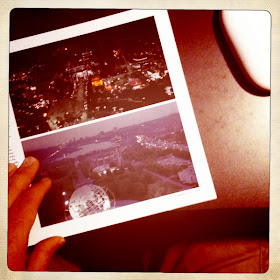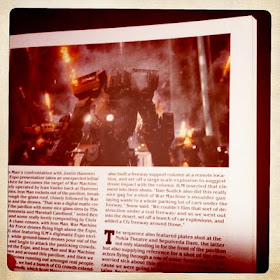
As the sad, demented souls who actually follow this blog have noticed (and God bless you demented souls), I haven’t been posting a lot lately. The easy way to describe this situation is with the old, tired, cliched excuse: “I’ve been really busy lately.” So I’m going to take the easy route and say exactly that.
At my day job at ILM, I spent the first half of the year working on “Iron Man 2,” where I was a sequence supervisor. Most of my time was spent working on the Stark Expo environment, which was well documented in
Cinefex 122 (article by Jody Duncan). I’m really proud of the aerial shots of the Expo; a before-and-after photograph in the Cinefex article gives a good impression as to the extent of the work. Mr. Favreau seemed quite happy with the quality of the shots, which makes me and the team very happy. After “Iron Man 2” wrapped, I worked on a super-top-secret project that I can’t discuss. After that wrapped, I worked on another super-top-secret project that I can’t discuss. So, there’s that. And now I’ve just started on a film where the pace is incredibly intense.
In the meantime, I bought a house, moved to the new house, and sold the old house. So there’s that, too.

All this whining doesn’t mean that my enthusiasm for writing has waned, it’s just that it’s getting harder to carve out those magic moments to indulge in my obsessions of film and visual effects. I have about thirty half-written articles sitting in the ole’ Google Docs about everything from diopter lens shots, to continuity editing, Kubrick and Wells, deep focus vs. shallow focus, the debacle of the “Pirates”/”Matrix” sequels and what they can teach us about blockbuster filmmaking, reality versus cinematic reality, narrative setups and payoffs, and about a hundred half-written Camera Shake Police citations. And I want to get to all of it. It will just take time.

Speaking of time, I actually have spent some time cleaning up
my personal website. There were an inordinate number of broken links to interviews and articles that I’ve since restored. (Thank you,
Wayback Machine!)
So this was a long way of apologizing for the lack of ‘stuff,’ and a promise that more will eventually come.
And, as always, feel free to send me any questions you might have about the visual effects world, and if the question is something that the entire class might enjoy, I’ll answer it here on the blog. My email address is tvaziri@gmail.com.
Thanks, all, for your patience. You internet folks have been a great source of inspiration to me. You’ve all been really supportive of my writing, including way back to the early days of
Visual Effects Headquarters. Thanks so much.
-todd
 I have a new metaphor to describe the studio-driven push for 3D stereo films.
I have a new metaphor to describe the studio-driven push for 3D stereo films.














































